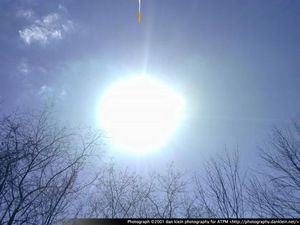For about two days, California was recently troubled with very high temperatures. We are only on the second week of May, but we reached a scorching 90F already. Would an extremely hot summer be torturing us pretty soon?
Hot summer days are inevitable. People would sometimes feel very weak and sick because of exposure to too much heat. To help us take extra precaution, let us define heat stroke and heat exhaustion so we could understand these conditions that we might experience during the hot season.
Heat stroke is considered as the most serious of the heat disorders. It can even result to death. A heatstroke happens when the body reaches a temperature above 106 degrees Fahrenheit or 41 degrees Celsius. The body’s cooling mechanism starts to fail, and neurological dysfunction follows. Failure of the circulatory system could follow, and if not treated even death. Heat stroke can occur without warning and can be associated with nausea and vomiting, fatigue, headaches, decreased sweat, decreased urination and confusion. There could be a rapid heart rate of 100 to 160 bpm. There is shortness of breath, loss of consciousness and possible blood in urine.
Heat exhaustion is the second most serious of the heat disorders. In contrast to heat stroke, this condition is described with heavy sweating, sometimes with cold, clammy skin. The person would feel agitated, tired and spent. There could be fainting, weakness, pale skin, nausea and vomiting and headache. If a rapid heart rate is a symptom of heat stroke, a person with head exhaustion would have a slowed or weakened heartbeat.
A person experiencing heat exhaustion should be attended to. If left untreated, this can progress and increase in severity until it becomes heat stroke. More over, medical treatment should be sought if the victim has other medical conditions or problems, such as heart problems, blood pressure related conditions, or severe problems with any organs or body systems such as liver or kidney.
The loss of water through excessive perspiration can lead to decreased blood volume and increased salt concentration.
So how do we take care of ourselves to avoid heat stroke or heat exhaustion? Follow these steps:
1. Avoid strenuous activities in hot or humid weather.
2. Be aware of how your body reacts to intense sun and high temperature.
3. If you really need to do a rather tiring activity or be in the sun, take time to get used to a new climate. As much as possible, limit exposure to the sun.
4. Drink plenty of water, even if you are not yet thirsty. Bring with you a bottle of water so you could always hydrate yourself.
5. Wear light-colored, loose-fitting clothing in hot weather.
6. Bring with you a hat or even an umbrella.
7. Limit food intake to small meals.
8. Limit caffeine and alcoholic beverages intake. They can result in dehydration.
9. Take frequent breaks. Open windows, or use a fan or an air conditioner to improve air circulation.
10. Take baths and showers. Bathing in tepid water is a good cooling technique because water conducts heat away from the body.



